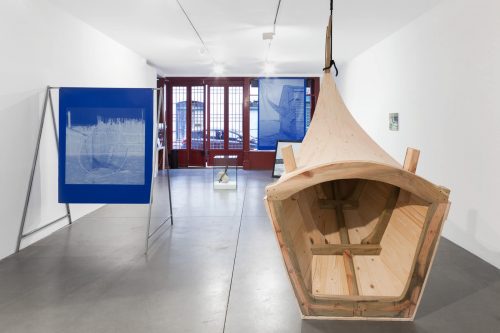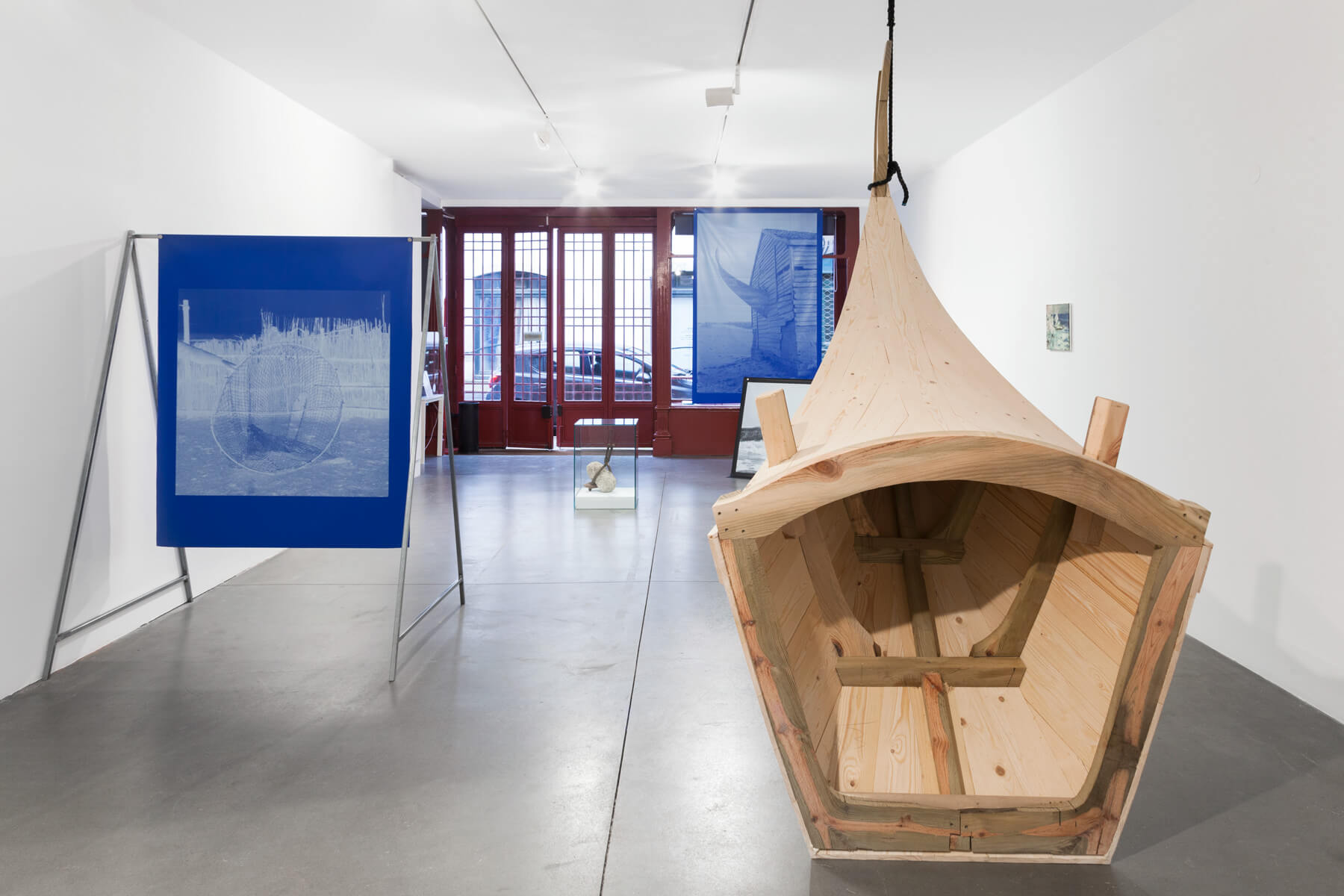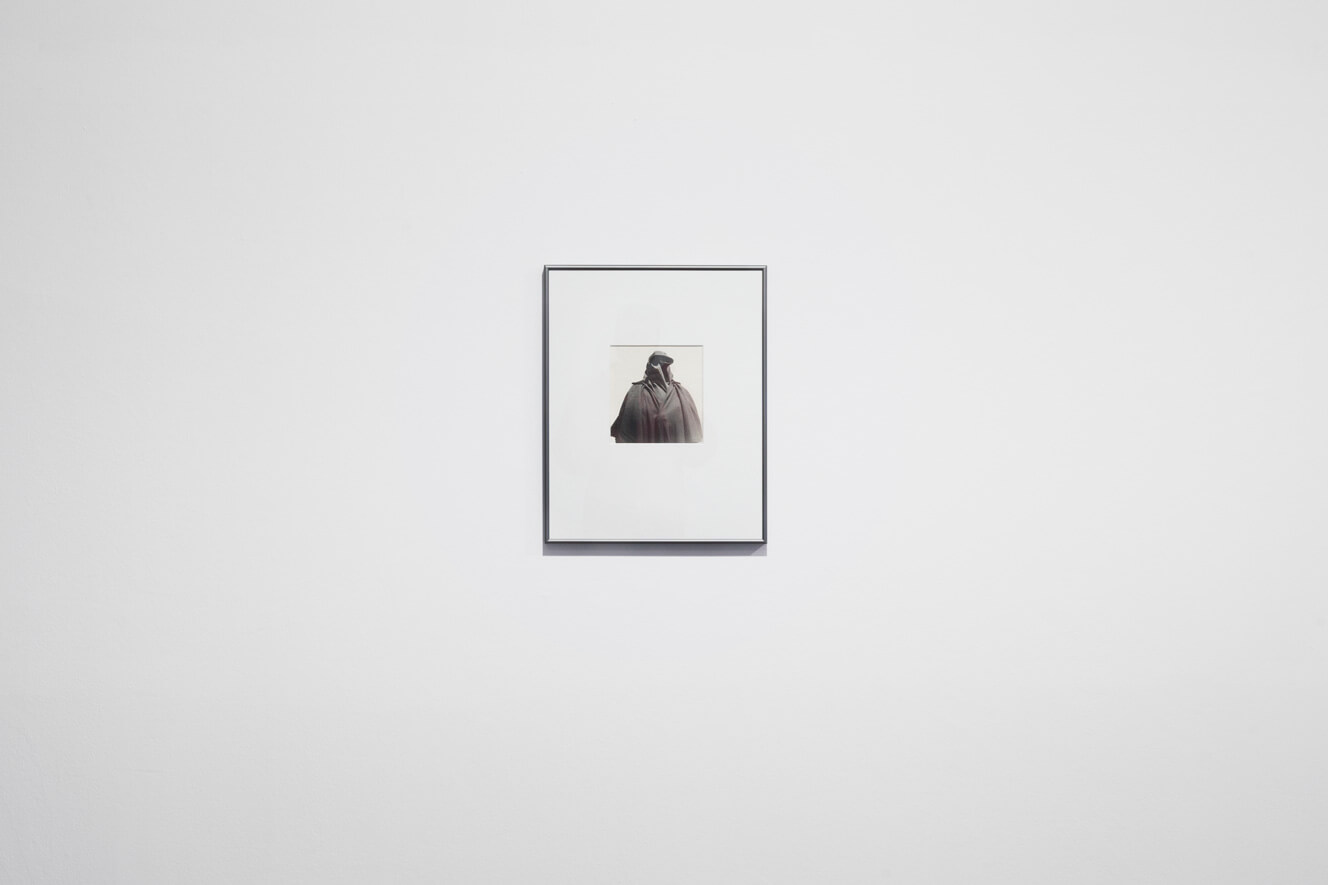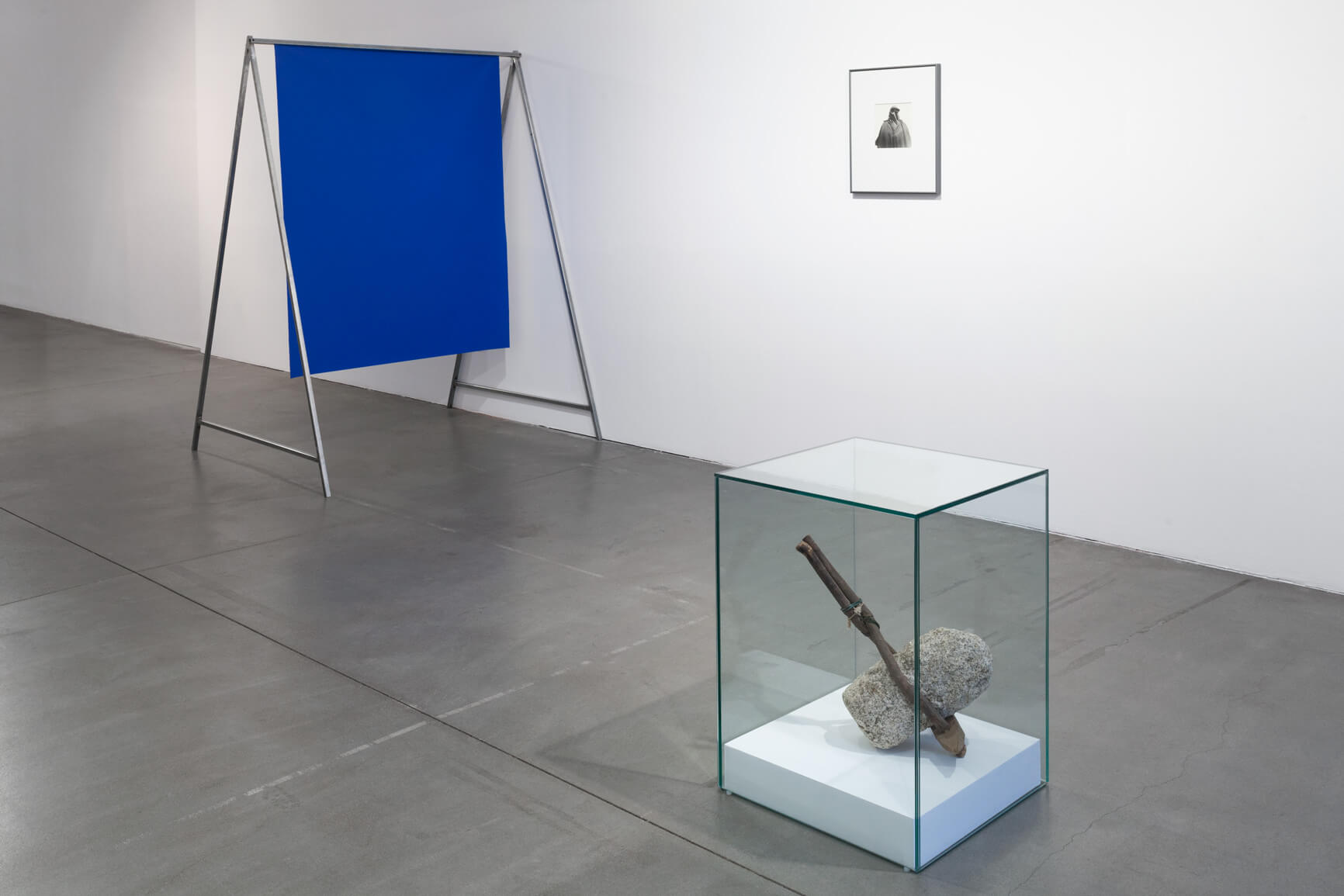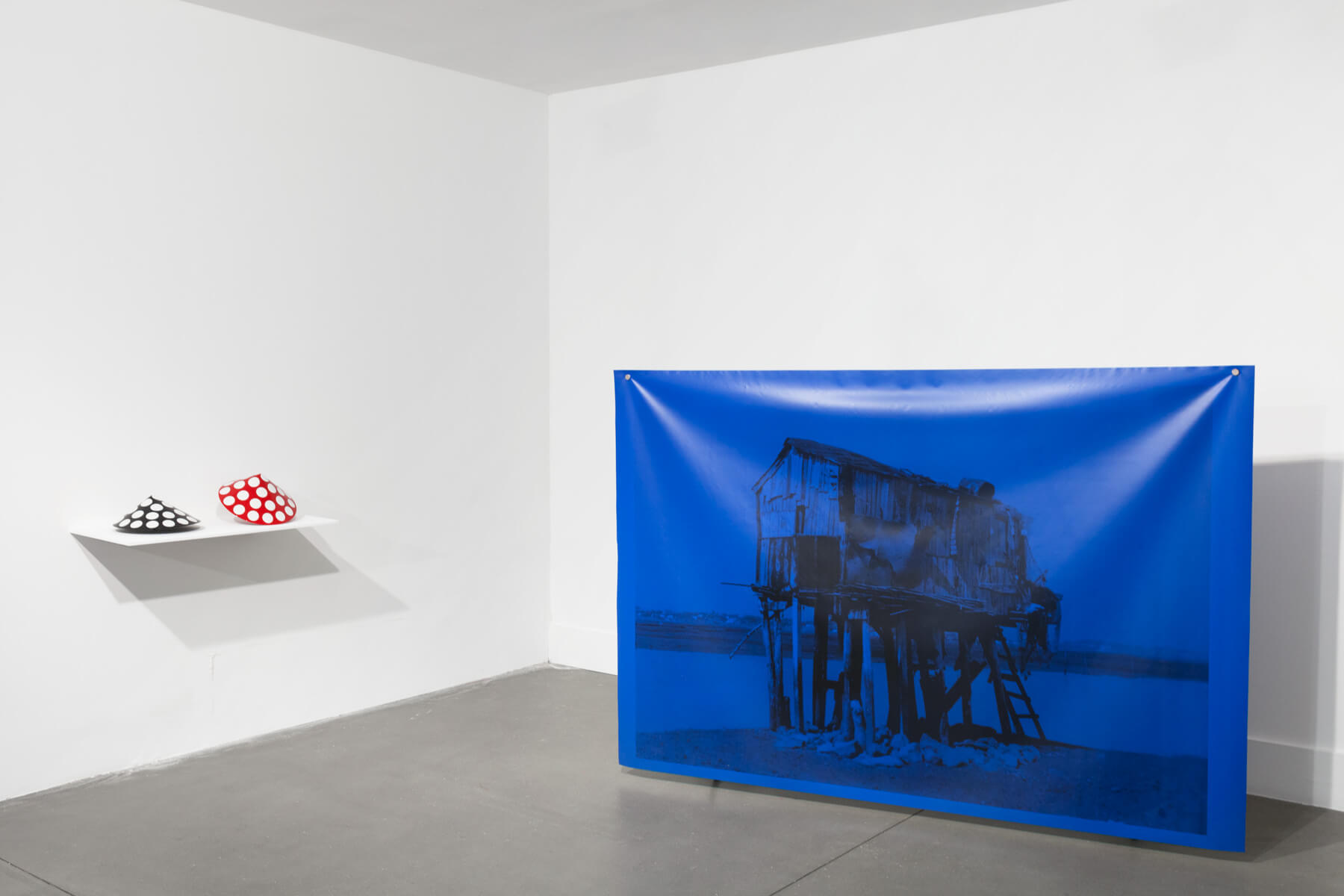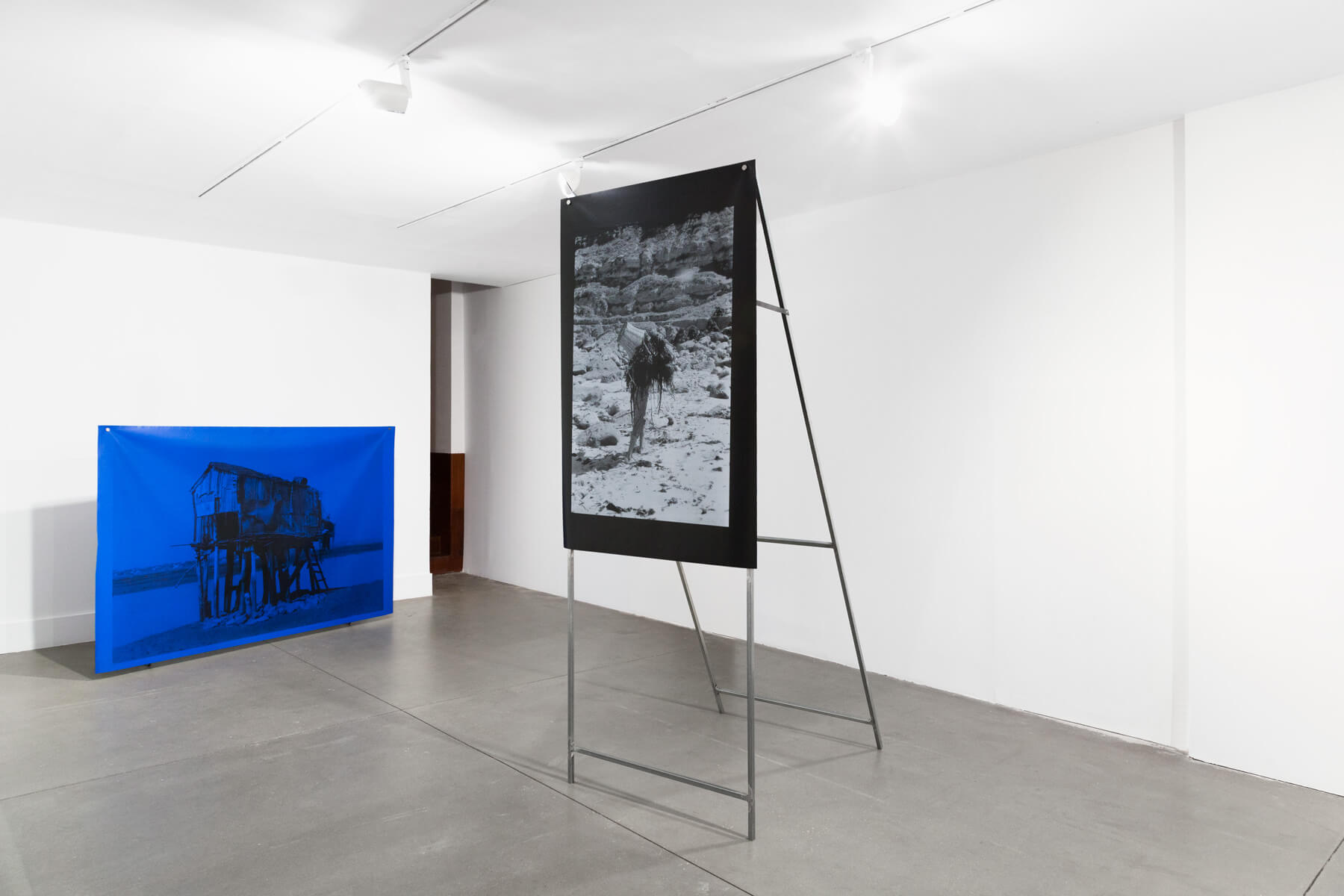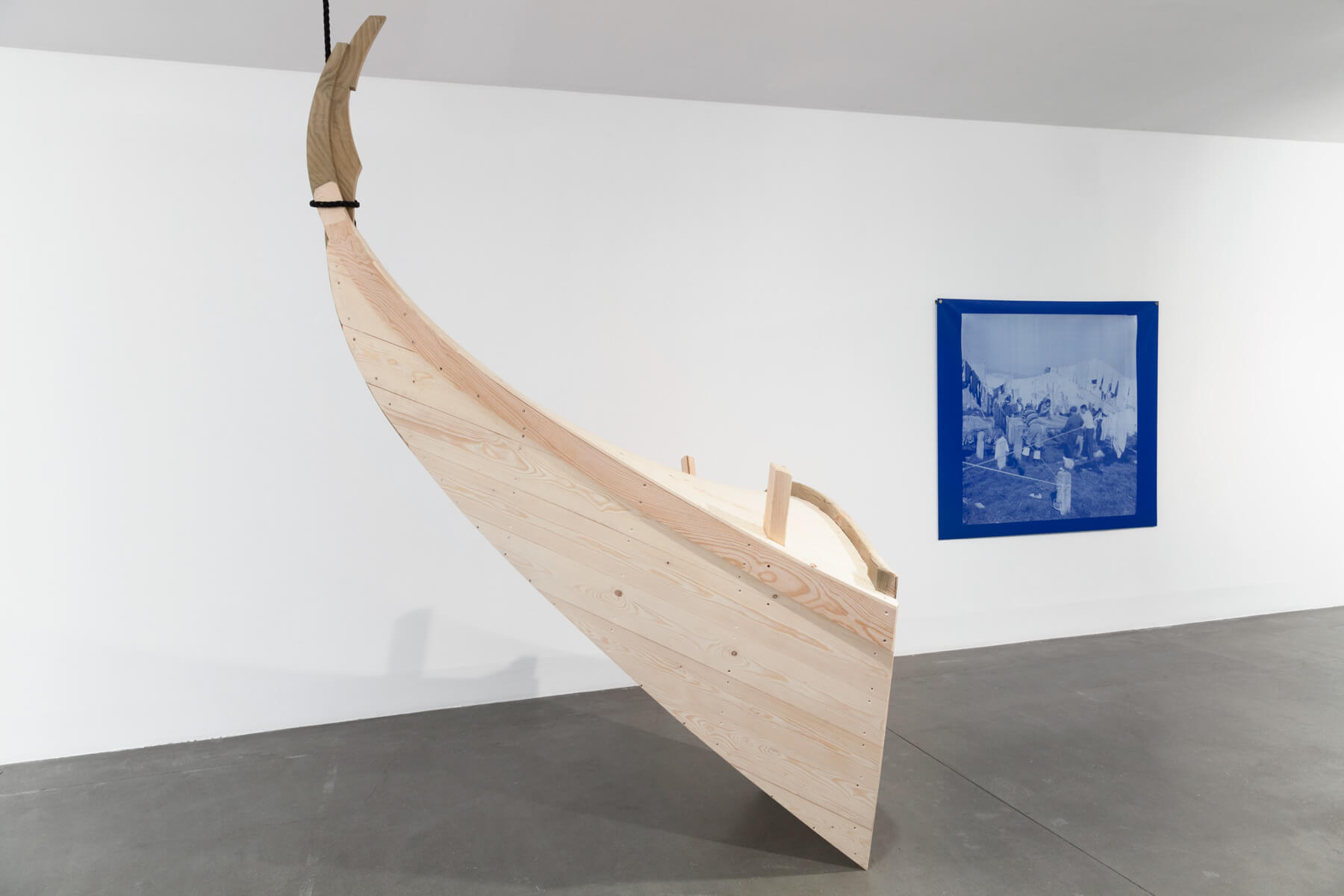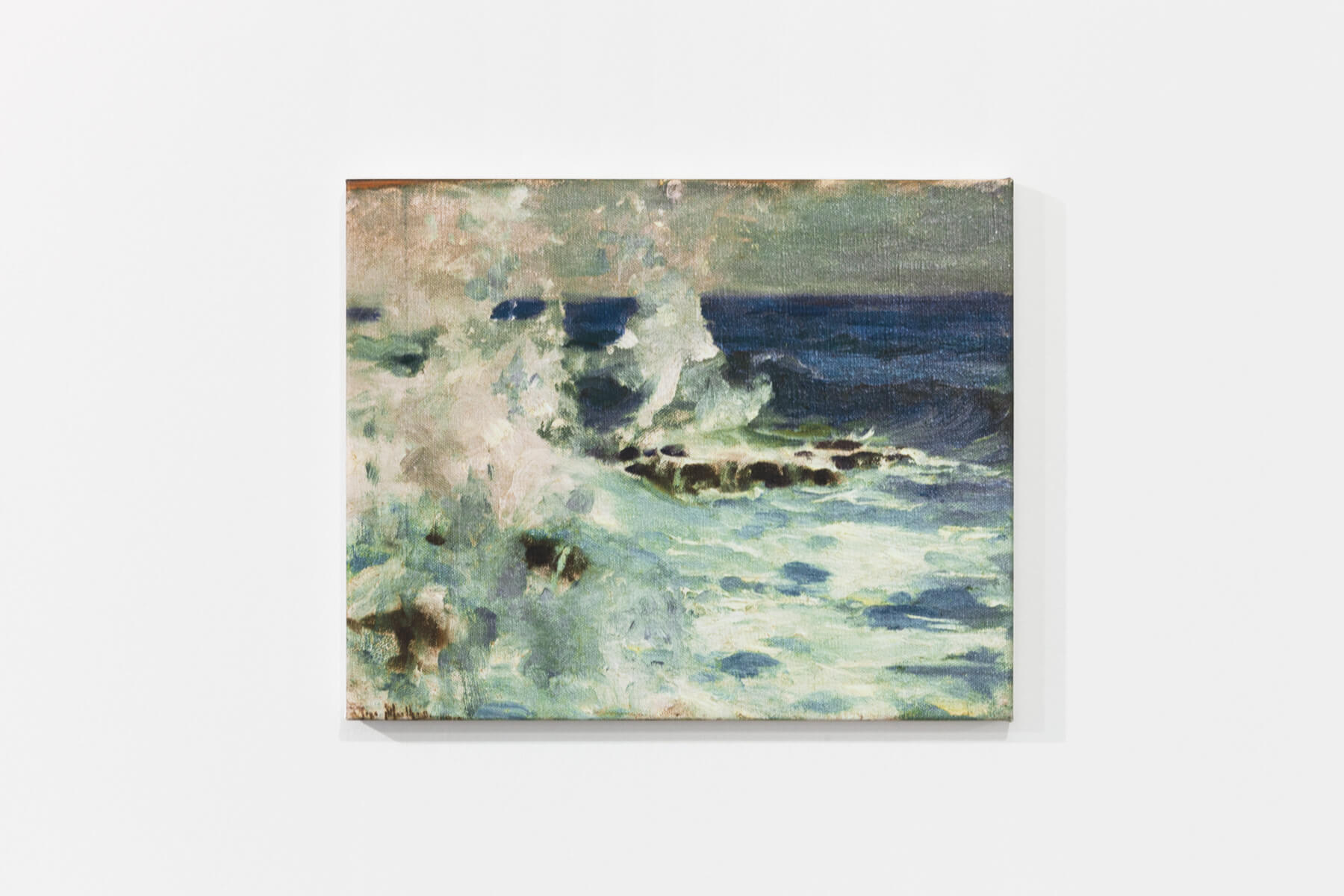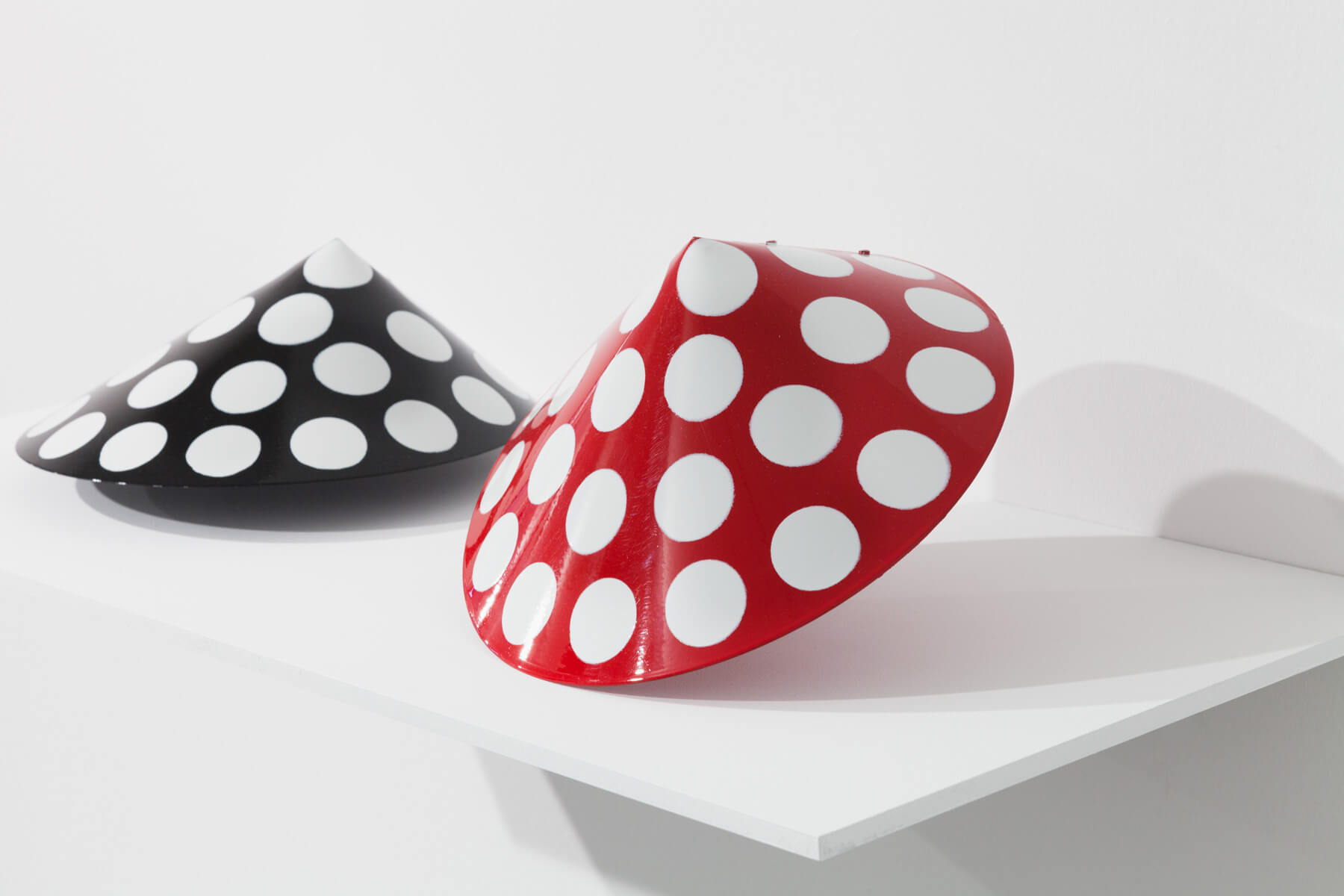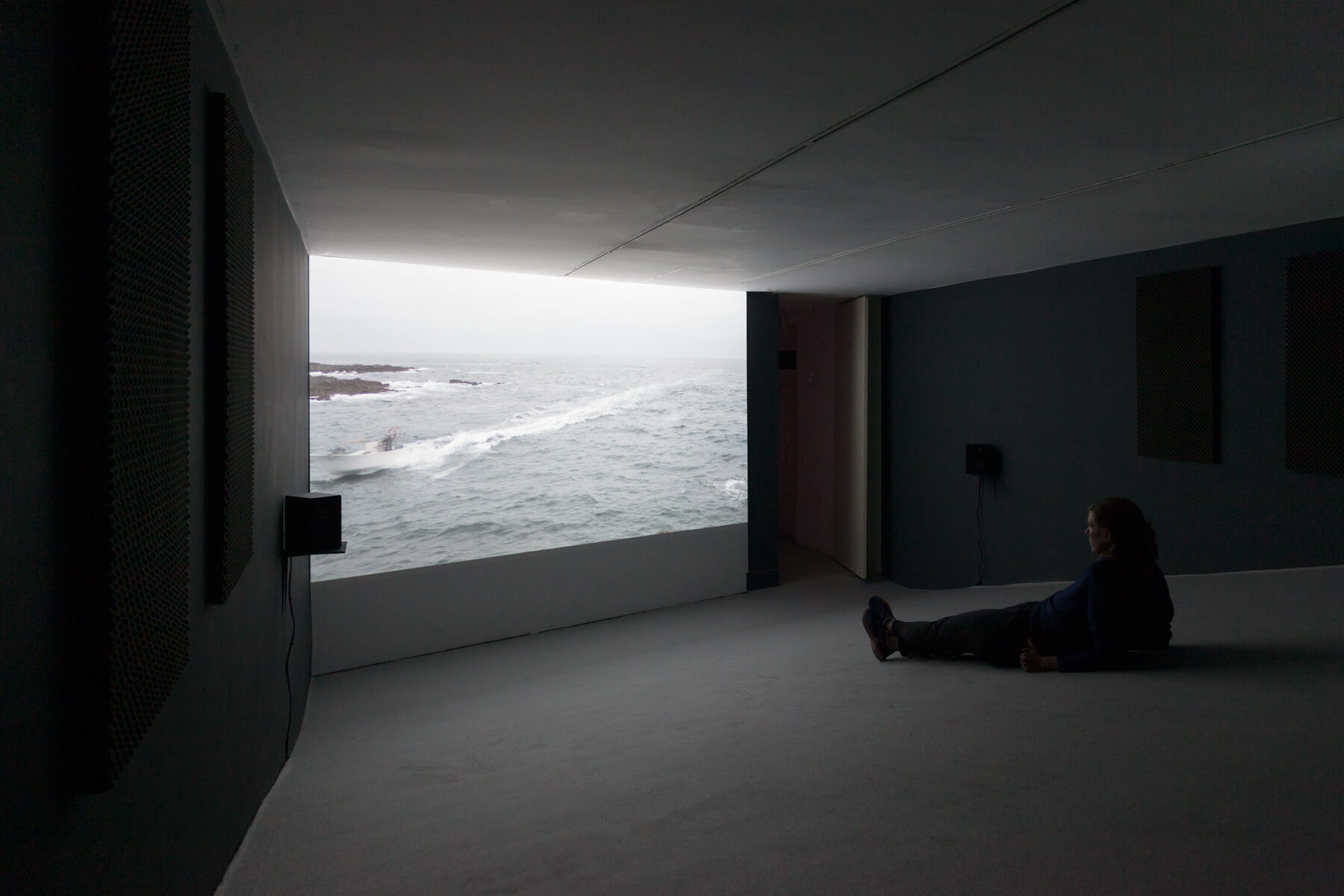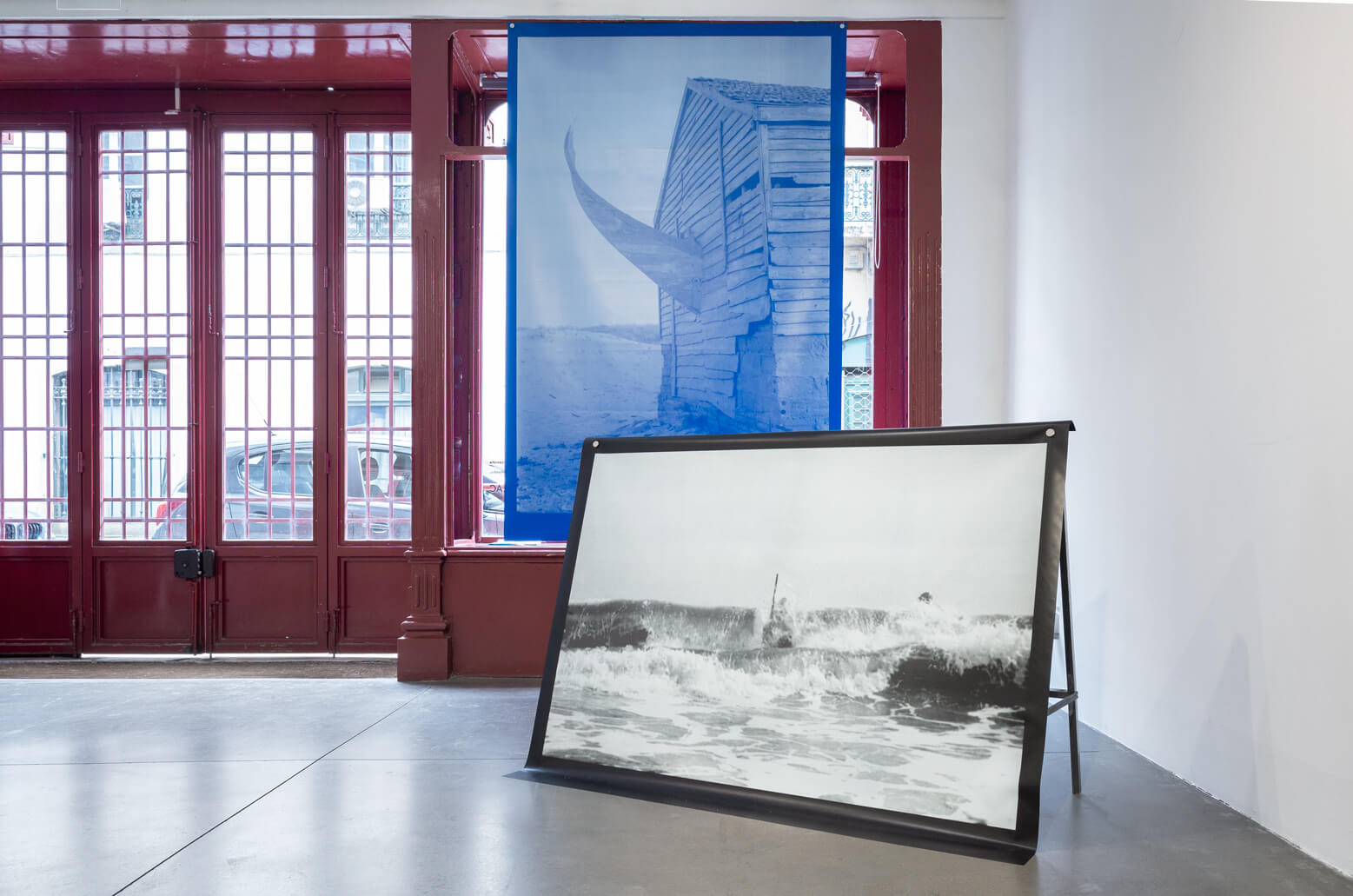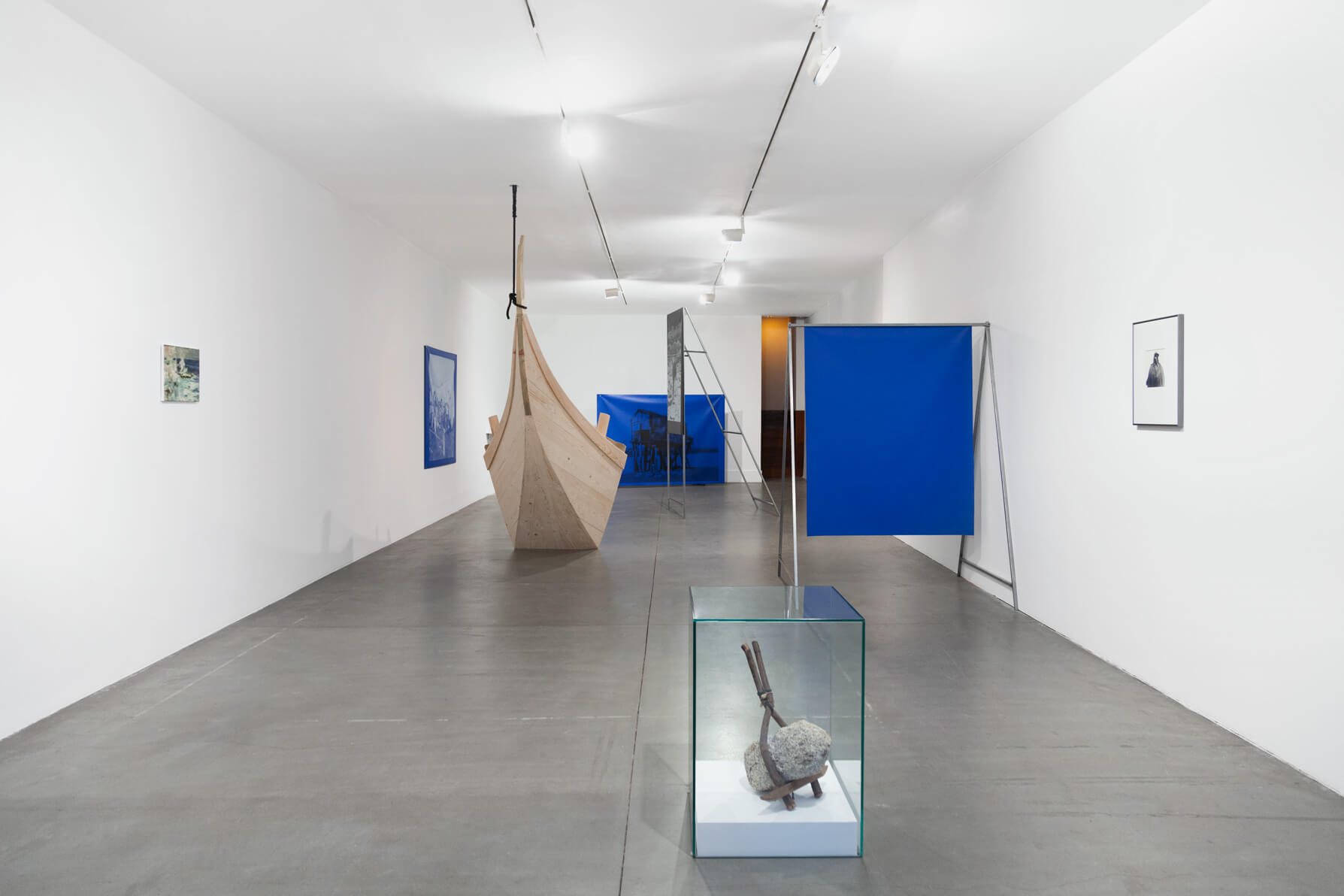– 20.06.2021
Cemitério das Âncoras is a new film and a collaborative exhibition project by Veronika Spierenburg and Nuno Barroso presented at Galeria Boavista, the exhibition space of Galerias Municipais, which is located in the Lisbon neighbourhood of Cais do Sodré. Along the river Tejo, this neighbourhood has historical links with the sea and the maritime industry and continues to boast a number of marine supply stores.
Spierenburg and Barroso have been collecting filmic notes of the disappearing small scale fishing industry in Portugal. Fishing is deeply connected to the identity of Portugal and stands for more than an economic activity. The sea and the land are interdependent. The extended duration of the artists research allowed them to build relationships with fishermen and women who share their stories and knowledge on camera. The starting point for the duo’s research was the ‘Anchor Cemetery’ at Barril’s Strand, Algarve, where several hundred heavy anchors have been planted in the sand and then abandoned. The anchors bear witness to the tuna-fishing industry, which once flourished and finally declined during the last century due to overfishing. The artists experimental and documentary approach to film mirrors the legacy of the ethnographers from Lisbon’s Centro de Estudos de Etnologia in the 1950s, 60s and 70s, whose work aimed to preserve and document techniques and knowledge that was already at the verge of disappearance.
Simultaneously a contemplative and sonic experience, Cemitério das Âncoras interweaves observations at different locations along the Portuguese coast. These are remarkable sites where the sea determines the climate and shapes the coast. The camera observes and explores the landscape with a sculptural view and captures fishing nets and boats, taking on the colour of the sea and changing the reflection of light from shades of blue to rust red.
In addition to the new film, the exhibition Cemitério das Âncoras reflects on the imaginary of fishing and the sea by presenting historical visual documents and artefacts on the gallery ground floor. This section features a selection of works that have been loaned from museums around the country and includes photographs by Benjamim Pereira and Artur Pastor as well as sculptural remakes produced by the artists in collaboration with local craftsmen. The artist’s thus question “How can historical photographs and objects be read in our days? How is history told and how can we show the transience in relation to the present?” In an attempt to create a cultural remake of the artisanal fishing history, the demise and agency of a cultural and ecological memory of Portugal are set into focus simultaneously.
– 20.06.2021

